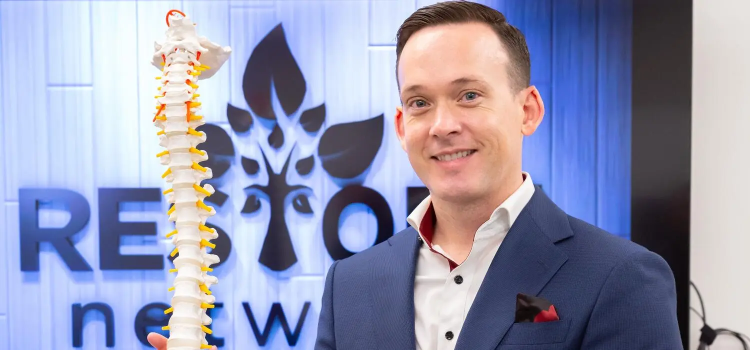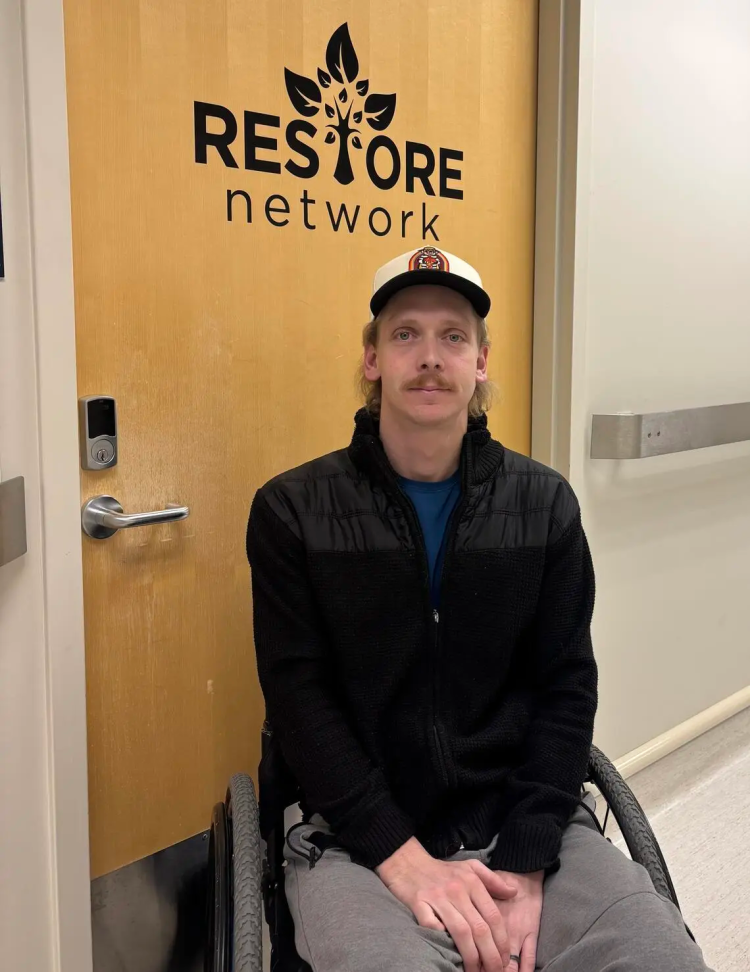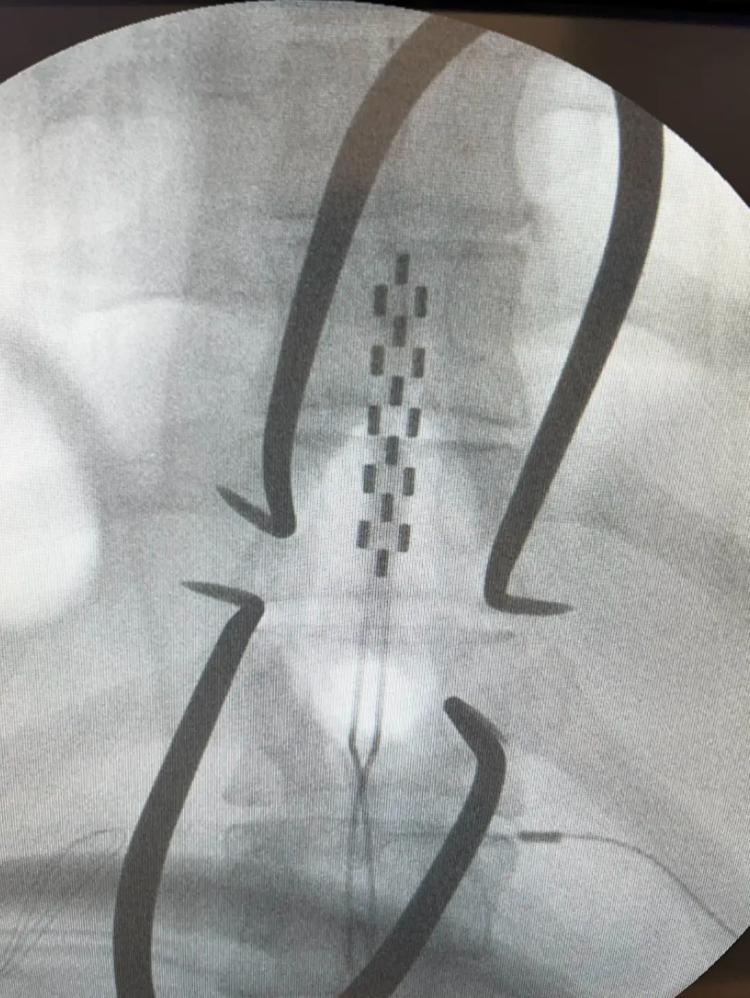One of the world's leading spinal cord injury (SCI) researchers, based at the University of Calgary, admits it's been astounding to see a tiny notion grow to the verge of changing lives.
Inspired by the SCI community, who experience swings in blood pressure, Dr. Aaron Phillips' research focuses on tapping into the nervous system to solve cardiovascular health problems.

Aaron Phillips holds 17 patents related to a medical device that restores blood pressure for those with spinal cord trauma. Photo Credit: Riley Brandt, University of Calgary
Two recent studies published in Nature and Nature Medicine, demonstrated that a new neurostimulation system, a neuroprosthetic baroreflex device, successfully restored blood-pressure stability. Phillips, PhD, partnered with ONWARD Medical to develop an implantable neurostimulation system that now has FDA (U.S. Food and Drug Administration) approval for additional research.
"To go from the initial idea to a patent, to an extensive array of laboratory work, to working with the FDA planning the industry-sponsored trial that could see this device become a standard of care for spinal trauma It's been the journey of a lifetime," says Phillips, an associate professor in the Cumming School of Medicine (CSM), neuroscientist and director of UCalgary's RESTORE Network.
International collaboration leads to pivotal trial for SCI patients
The research was done in conjunction with neuroscientists and neurosurgeons from the Netherlands and Switzerland, including École Polytechnique Fédérale de Lausanne (EPFL), Lausanne University Hospital, and University of Lausanne. That work opens the door to a pivotal trial involving approximately 20 leading neurorehabilitation and neurosurgical research centres across Canada, Europe and the U.S.

Cody Krebbs says he's back at work and has more energy since receiving the implant. Photo Courtesy Phillips Lab
The research makes several important discoveries, says Phillips.
"First, we show that low blood pressure after a spinal cord injury has serious medical consequences that should not be clinically ignored," he says.
"Second, we show that our neuromodulation therapy for blood pressure instability after SCI can be deployed effectively in diverse clinical settings in different countries with different medical protocols.
"Third, we show that a custom implantable system targeting the specific areas of the spinal cord, that we discovered a few years ago are critical for stabilizing blood pressure, is optimized for effective management," says Phillips.
"This is extremely rewarding for me because it's the penultimate step in an incredible journey to help people with spinal cord injury."
UCalgary as an incubator for research that improves lives
"A big part of the commercialization journey is conceiving of new ideas that could have health or societally positive impact, says Phillips.
"When you're in the university ecosystem, you can generate grants and get funding to then test your ideas and refine your concepts and bring them closer to clinical trials to improve lives," he says.
Phillips says the trek from idea to implementation took about seven years, from initial success in the lab to the first human tests and partnering with clinical departments at UCalgary. Working with Innovate Calgary, Phillips and his team formalized the intellectual property (IP) strategy, including managing initial patent filings and subsequent applications, which ultimately enabled the licensing of several co-invented patents to ONWARD Medical.
"Our success is the result of an incredible collaboration of experts spanning a wide variety of fields including science, medicine, and biomedical engineering," says Phillips.
ONWARD supported the clinical-grade manufacturing and safety testing of the implantable device. The technology is now licensed to ONWARD, where the hardware , the ARC-IM System, is being developed commercially.

An electrode placed in the epidural space of the spine stimulates the spinal cord. Photo Courtesy Phillips Lab
"We have an amazing partnership with ONWARD and we've built really strong collaborative connections with EPFL, which is the MIT of Europe," says Phillips. "We've also trained a huge number of engineers, future physicians, neuroscientists (and) biologists on all these approaches and some of them are moving on to now expand into their own technologies.
"The health impact of this research is massive, but there is also huge economic impact with the people we have trained, and the company being a successful guiding light for neurostimulation companies working on solutions for underserved populations"
Hope for those living with SCI
With the therapy proving robust and predictable under a variety of medical styles and approaches, Phillips hopes the next big moment for the neuroprosthetic baroreflex device is one of celebration for people living with SCI.
"For people with spinal cord injury, it's been a really dark message for such a long time - there's nothing that can be done," says Phillips.
"Soon, we won't have to have that conversation anymore. This is a therapy for people with spinal cord injury, and it's one of the first interventions to come to market, ever. That's where we're at in the journey."
Phillips holds 17 patents related to his research and is a shareholder of and consultant for ONWARD Medical.
Aaron Phillips is an associate professor in the departments of Clinical Neurosciences, Physiology & Pharmacology, and Cardiac Sciences and associate dean (Innovation & Commercialization) at the Cumming School of Medicine (CSM). He is a member of Hotchkiss Brain Institute, and the Libin Cardiovascular Institute and director of the Restore Network at the CSM.













